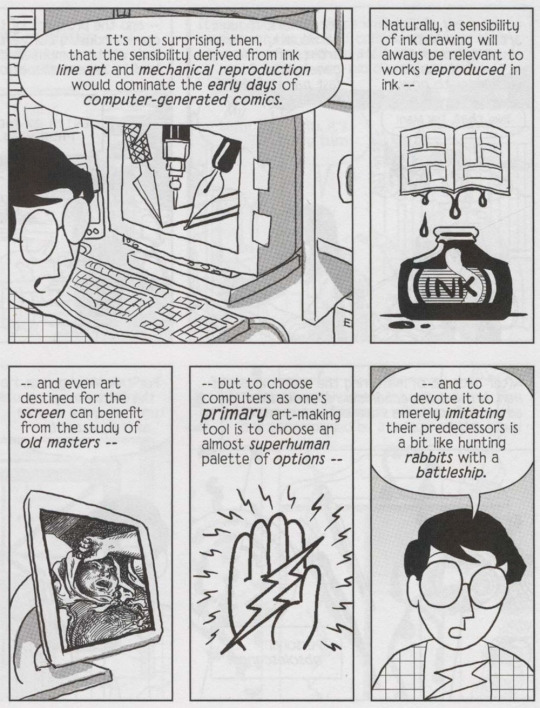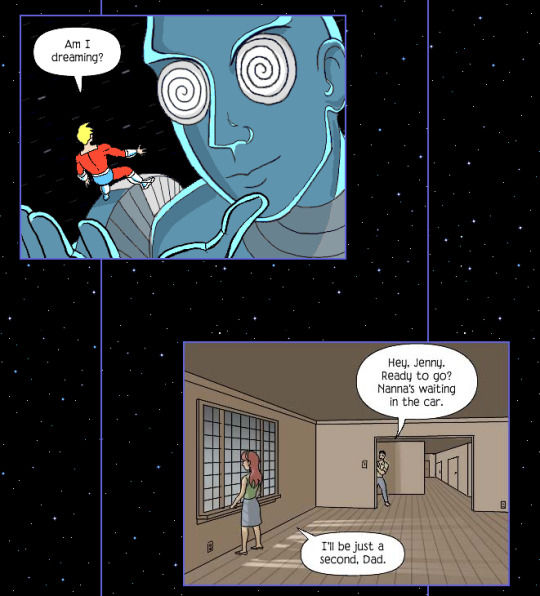#he can't be constrained by the square canvas!!!!!!!!!!
Explore tagged Tumblr posts
Text

THE MOST RIDICULOUS POWER IN THE WORLD!!! THIS IS MY PEAK!!!
guess who finished wano and it blew my socks off
#tumblr gets this one first on its own bc i wanted to show off this silly transparency idea i had#he can't be constrained by the square canvas!!!!!!!!!!#one piece#monkey d luffy#sun god nika#joyboy#wano country#wano spoilers#its been a long time since i drew something so fast and so easily and had this much fun doing it........#almost like... this is MY peak#more doodles and stuff coming tomorrow hehe
230 notes
·
View notes
Note
You know, it's always struck me as a little odd how little most webcomics actually attempt to adapt to their medium. There's basic strips, the old 2k era 4-square, the endless scroll of Webtoons, and a few weird experimental things like Homestuck, but most webcomics I run into tend to stubbornly stick to conventional portrait-oriented page layouts.
It's… readable, I guess, but that format doesn't seem to work very well for either desktop or mobile viewing. It wastes a lot of screen-space, and usually makes it impossible to actually view the full page without making the text too small to read.
Have you encountered any interesting webcomics that experiment with more landscape-oriented layouts? I'm kinda curious about how well that would work.
So, there's this dude Scott McCloud who wrote about comics in the 90s. His first book, Understanding Comics, is literally the book on comics, it's the one schools make kids read. This third book, Making Comics, is a pretty good practical advice guide I'd recommend, even if it's not his groundbreaking seminal work. In between those two books was one called Reinventing Comics

Reinventing Comics, written in 1993, was basically a book of predictions about how this newfangled Interweb was going to revolutionize the art of comics creation. Like a lot of early-90s stuff "Wow the internet!" stuff, it has a lot of inaccurate predictions, and thus isn't super well remembered (though, unlike a lot of early-90s predictions of the internet, it at least vaguely resembled reality).
Anyway, one of the big things from that book was the idea of the "infinite canvas".

Which was basically the idea that a comic didn't have to be constrained by the size of the screen because you could scroll it. And this was a big idea in early webcomics, you heard this phrase a lot. And you'd see infinite canvas techniques like "What if the characters are falling and the comic is really tall to sell that?"

(Read Narbonic)
Which is basically the one and only example that actually took off, because it turns out that scrolling horizontally sucks and no one really wants to do it except as a one-of gimmick (as Homestuck does). The much bigger impact of the internet was that a webcomic could be infinitely long and still reasonably expect it's readership to have read it all, but I think McCloud missed that one. So while there were a bunch of "landscape" webcomics where you scrolled horizontally, none of them took off, and even the ones that were well received are long gone.

Adams himself would make Zot!, which is a vertical scroll comic that had a bit of a gimmick with parallel story beats being literally parallel. I think he even did some branching paths, and experimented with comics that you could read in different directions or that looped back on themselves.

But then Homestuck just did that better because, as I mentioned, infinite depth ended up being a lot more impactful than infinite width. It turns out that making a comic really wide calls a lot of attention to itself and makes the comic annoying to read. And it doesn't mean you can't do it (Homestuck did it!), but it does mean it can't be the gimmick you hang your comic up on unless you've got a really good reason for doing it.
#Scott McCloud#Homestuck#“Webcomic creators should be more creative”#“What if we made the comic WIDE?”#“Wide is not a creative color”
2K notes
·
View notes